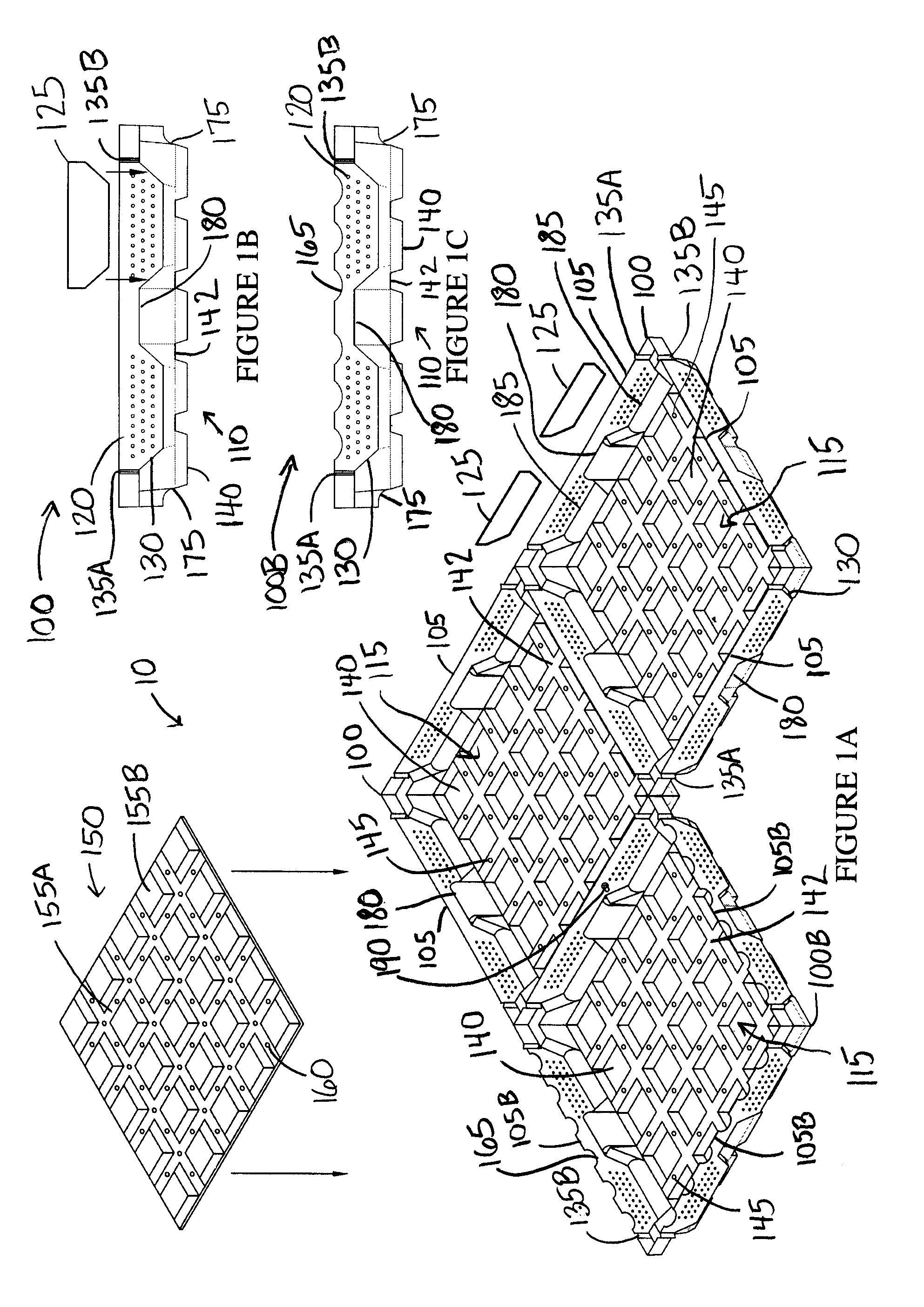Enhanced vegetative roof system
a vegetative roof and enhanced technology, applied in the direction of roofs, roof improvement, construction, etc., can solve the problems of lowering the temperature in city environments, large air gaps between modules, and affecting energy efficiency and acoustic insulation
- Summary
- Abstract
- Description
- Claims
- Application Information
AI Technical Summary
Benefits of technology
Problems solved by technology
Method used
Image
Examples
Embodiment Construction
[0014]Returning to FIGS. 1A and 3 the exemplary vegetative roof system 10 is made up of one or more individual, easily-moveable modules 100 or panels. Four sidewalls 105 rise upwardly to various heights to define the interior volume 115 that can contain components of the vegetative roof system 10 (such as engineered growth media 305, filter fabrics, plants, etc.). Individual modules 100 can be placed side-by-side on a roof to fully cover a designated area, resulting in a visually uniform stand of vegetation. Modules 100 are removable as needed to, for example, perform underlying roof repairs. The vegetative system provides for enhanced modularity and improves on hybrid or monolithic systems. Features such as full height sidewalls 105 with a perimeter edge flush with the level of growth media 305 (see FIG. 3) facilitates the separation and removal of a module 100 from adjoining modules 100. This enhances access in the vegetative roof system 10, enabling removal without significant di...
PUM
 Login to View More
Login to View More Abstract
Description
Claims
Application Information
 Login to View More
Login to View More - R&D
- Intellectual Property
- Life Sciences
- Materials
- Tech Scout
- Unparalleled Data Quality
- Higher Quality Content
- 60% Fewer Hallucinations
Browse by: Latest US Patents, China's latest patents, Technical Efficacy Thesaurus, Application Domain, Technology Topic, Popular Technical Reports.
© 2025 PatSnap. All rights reserved.Legal|Privacy policy|Modern Slavery Act Transparency Statement|Sitemap|About US| Contact US: help@patsnap.com



